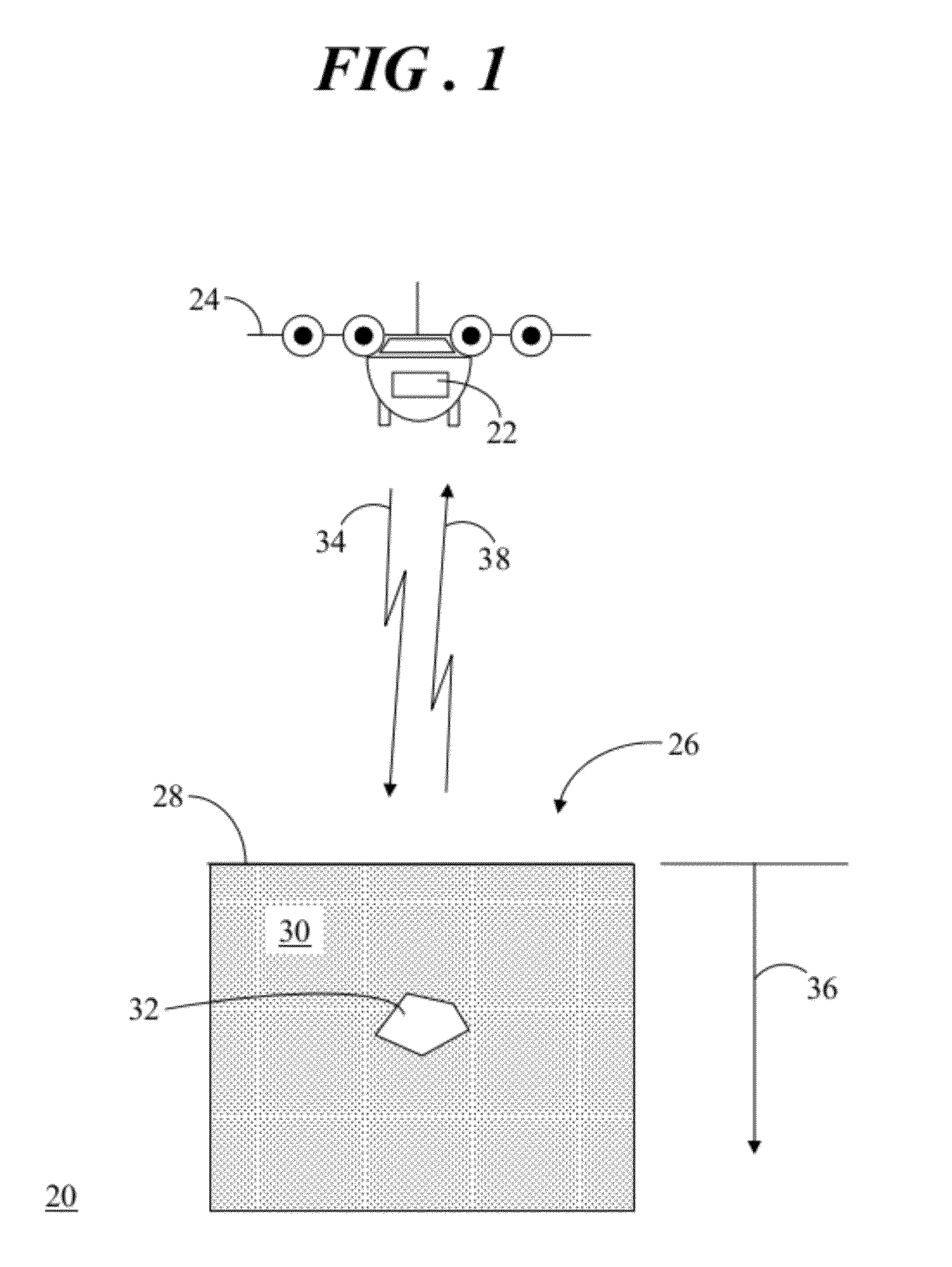Surface penetrating radar system and target zone investigation methodology
a radar system and target zone technology, applied in the field of surface penetrating radar systems, can solve the problems of limiting the penetration distance and reflection time resolution, complex, heavy, etc., and requiring large and expensive aircraft to carry the gpr system
- Summary
- Abstract
- Description
- Claims
- Application Information
AI Technical Summary
Problems solved by technology
Method used
Image
Examples
Embodiment Construction
[0015]Embodiments of the invention entail a surface penetrating radar system and associated methodology for investigating the surface and subsurface of a target zone. The radar system and methodology implement a narrow bandwidth direct sequence spread spectrum (DSSS) code. The narrow bandwidth can minimize frequency dependent dispersion and distortion. In addition, the DSSS code enables greater process gains for adaptation to different distances of subsurface penetration and improved reflected signal recovery. A long, DSSS coded, narrow bandwidth radar waveform signal advantageously enables the energy of the waveform to be distributed over the entire DSSS code sequence so that peak power requirements of the transmitter can be greatly reduced. The relatively low peak power requirements of the radar system allow smaller and lighter radar components suitable for airborne applications, such as manned aircraft and unmanned aerial vehicles (UAV).
[0016]FIG. 1 shows a diagram of an environm...
PUM
 Login to View More
Login to View More Abstract
Description
Claims
Application Information
 Login to View More
Login to View More - R&D
- Intellectual Property
- Life Sciences
- Materials
- Tech Scout
- Unparalleled Data Quality
- Higher Quality Content
- 60% Fewer Hallucinations
Browse by: Latest US Patents, China's latest patents, Technical Efficacy Thesaurus, Application Domain, Technology Topic, Popular Technical Reports.
© 2025 PatSnap. All rights reserved.Legal|Privacy policy|Modern Slavery Act Transparency Statement|Sitemap|About US| Contact US: help@patsnap.com



